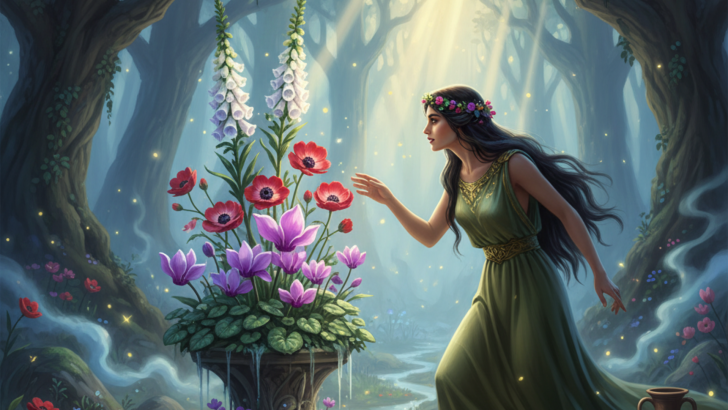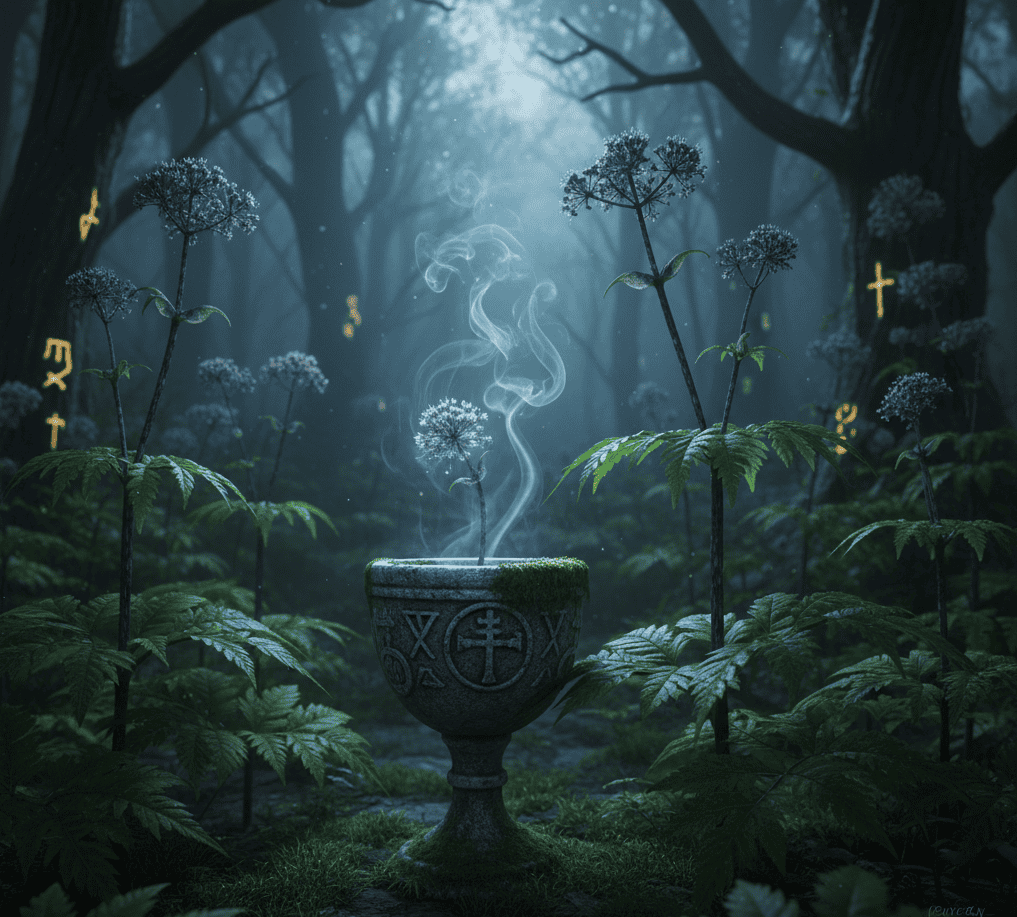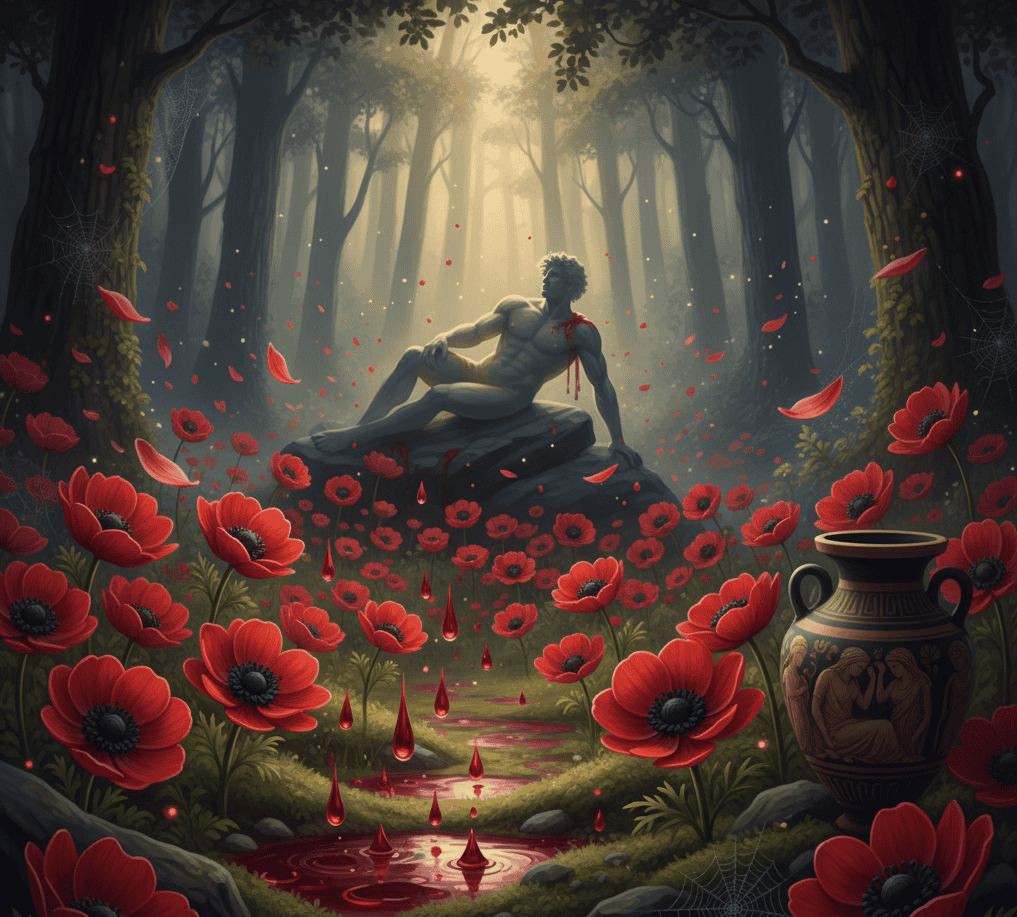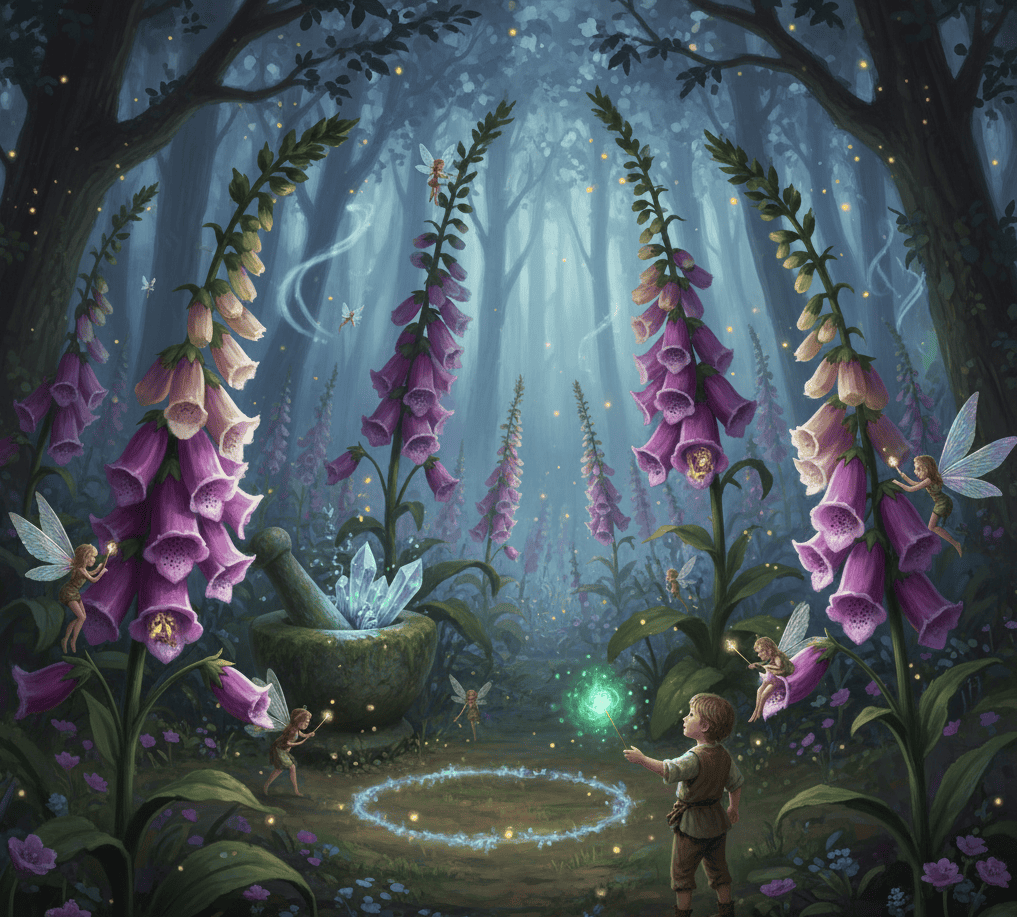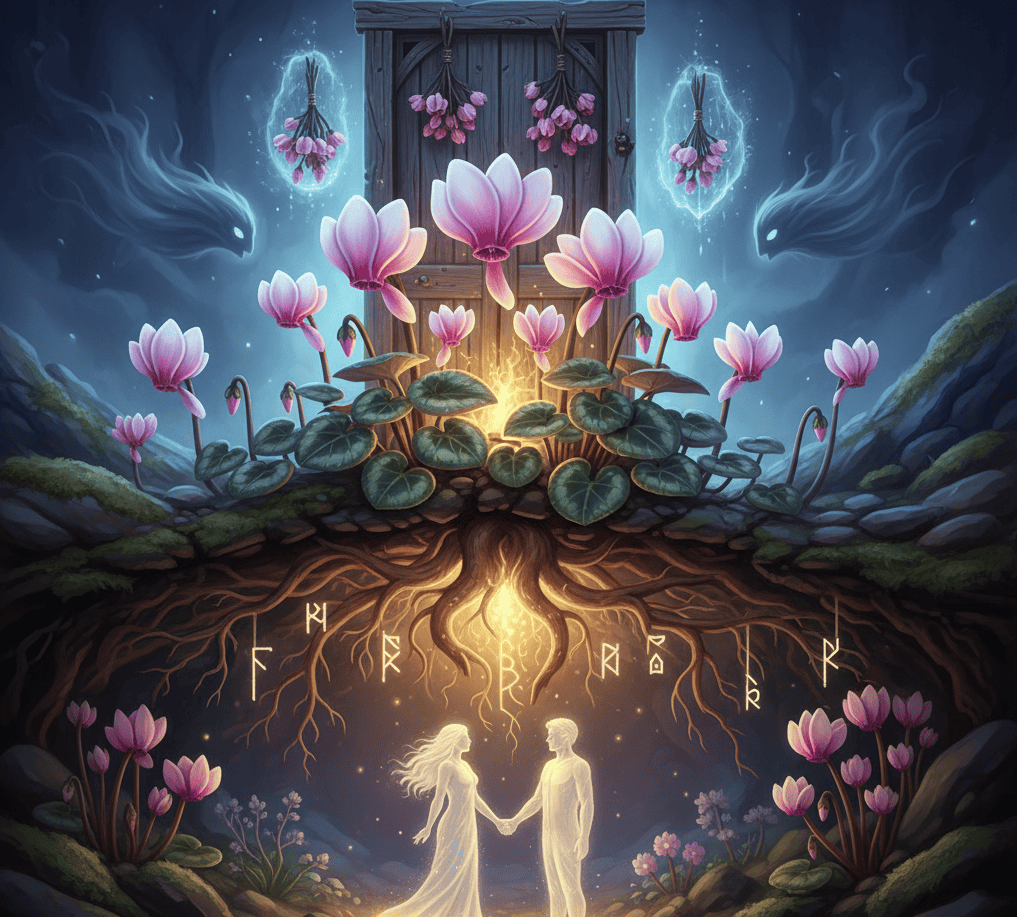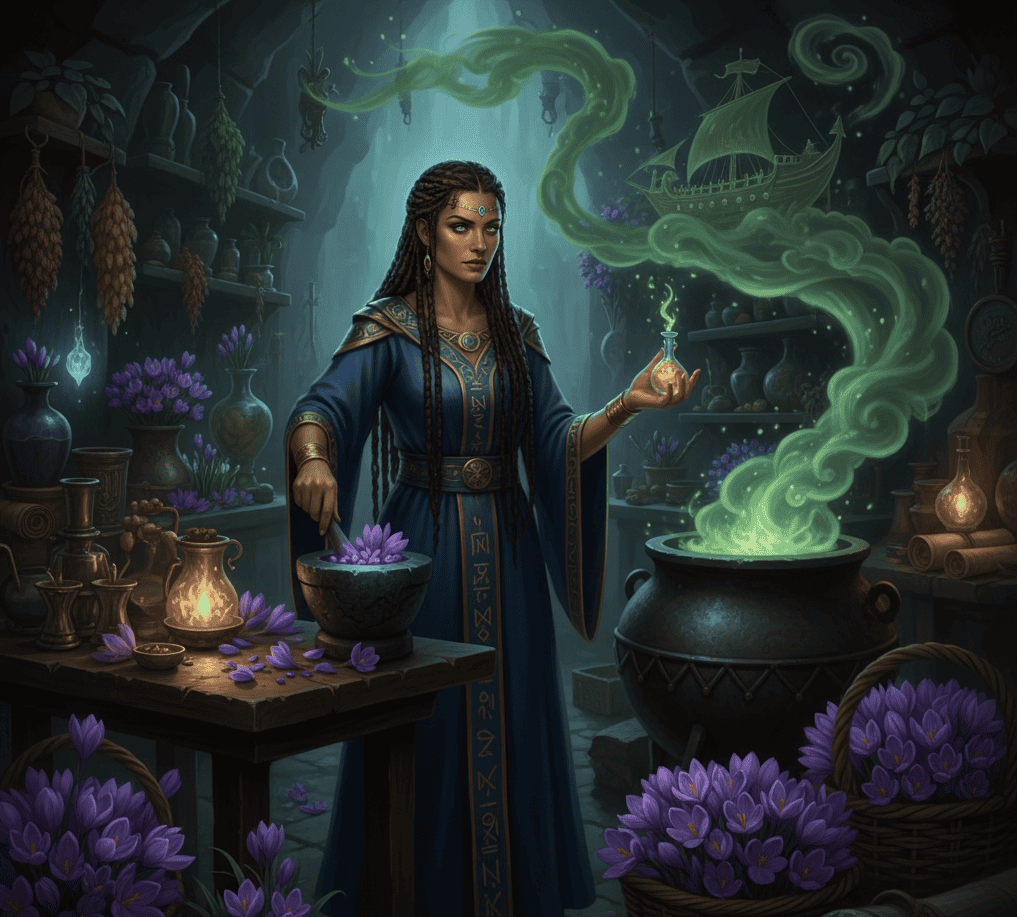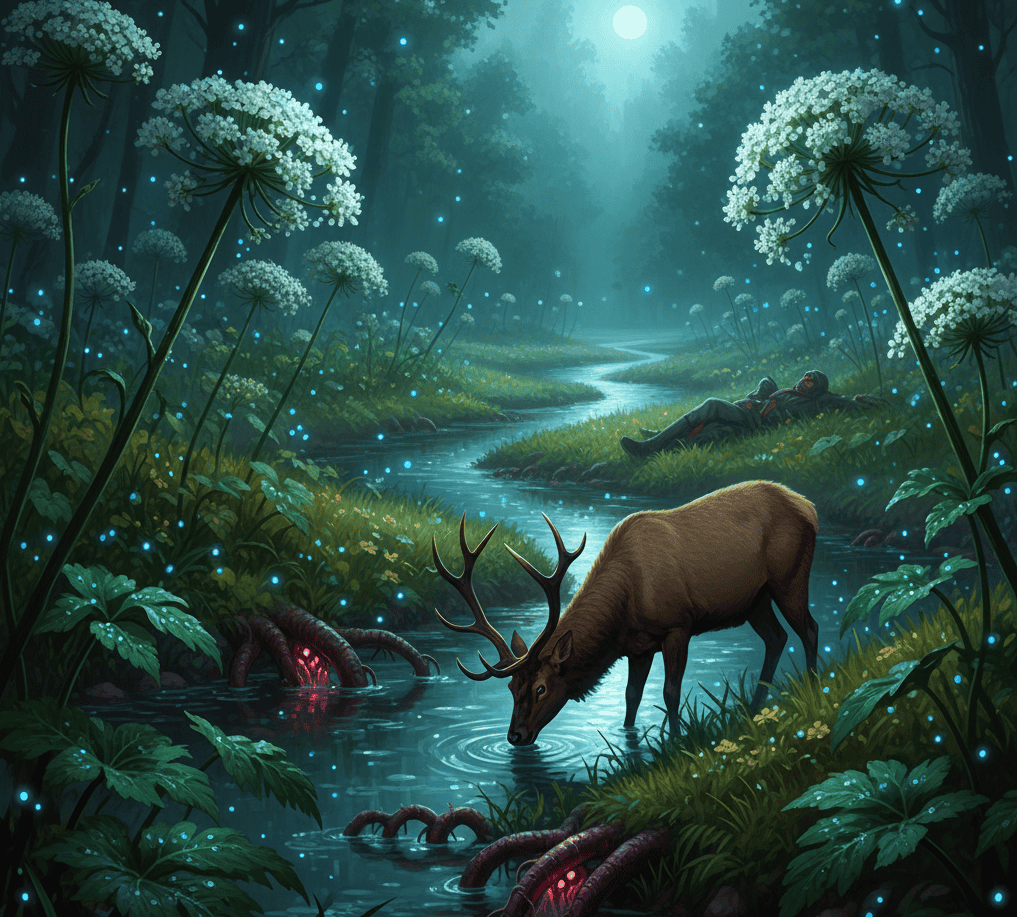Myths love to hide danger in the most beautiful places. A bright blossom, a fragrant root, or a graceful tree could be as much a symbol of doom as a symbol of blessing.
Ancient storytellers used plants to embody curses, fate, seduction, and forbidden knowledge. Sometimes the plant itself became the story.
Below are seven poisonous plants that step out of the garden and into legend, each one heavy with meaning and warning.
1. Hemlock, the Cup of Fate
Hemlock is the plant most people remember when myth meets history. Its name was already feared in the ancient world long before the tragic last drink of Socrates made the image unforgettable.
Hemlock became more than a botanical poison. In Greek stories, it was the emblem of endings that come whether you welcome them or not.
Those who speak of hemlock in myth imagine a silence that arrives like night. It is the plant that seals sentences and shapes fate.
In literature and in ritual memory, hemlock marks the moment where human agency meets the decree of gods and law.
The cup of hemlock did not just take breath away. It signaled the surrender of one order and the passage to another.
To look upon a patch of hemlock was to feel the closeness of mortality, a reminder that some doors in life, once opened, cannot be closed.
2. The Lotus of Forgetting
When Odysseus and his crew wash up on the shore of the Lotus Eaters, the danger is not a monster waiting behind a cave but a flower that steals memory.
The lotus offered by those islanders was a nectar of gentle disappearance. Eat it, and the past goes soft around the edges.
Homes, names, duties, and the painful grit of longing melt like sugar on the tongue. The lotus is poisonous only in the way of temptation.
It does not kill the body quickly. Instead, it kills the timetable and resolve. Many versions of the tale make the lotus taste like a lullaby.
Workers who ate it forgot what pulled them from the sea, and the families who waited. In myth, the plant becomes a moral test.
It asks which is worse, a life that hurts and remembers, or a life that is cushioned and empty.
The lotus symbolizes the seductive danger of losing history, of being erased gently by comfort.
3. The Anemone of Blood and Loss
The red anemone is born from one of the great sorrowful images in Greek myth. Adonis, the beautiful man loved by Aphrodite, dies in a hunting accident, and from his spilled blood the anemone springs.
The blossom becomes a living memorial, beautiful but stained with mortality.
Anemones are delicate; they open and close with the weather, and that fleetingness gives them a symbolic weight.
They are the visible sign that beauty can be born of violence and that mourning itself can bloom. In some stories, the anemone carries a sting in its sap.
To bring it close is to invite the memory of what was lost. As a mythic symbol, the anemone teaches that some beauty is inseparable from sorrow, and that every scar has its own blossom.
4. Foxglove and the Fairy’s Glove
Foxglove is a plant of tall, bell-shaped flowers whose juice hides deadly cardiac power. In folklore across northern Europe, the plant sits at the border between the human and the fairy world.
One old story says that foxes wore the blooms as gloves while stealing chickens at night. Another says fairies left the tubular flowers as gifts or as traps.
Myth and superstition tell of children and craftspeople touched by foxglove’s magic. In some tales, a careless hand reaches into a ring of flowers and awakens the tiny folk.
In others, the plant’s medicine is a two-edged wonder. A drop can steady a failing heart and save a life if used with skill.
Too much and the heart falters forever. Foxglove in myth, therefore, becomes the emblem of healing that can kill, of knowledge that is dangerous without respect, and of small, unseen worlds that brush against our own.
5. Cyclamen and the Subterranean Bloom
Cyclamen grows from a buried tuber and lifts a wheel of delicate petals above the ground each year.
In Mediterranean folklore, the plant carried associations with the underworld because of the way it seems to rise out of darkness.
Many of its parts are bitter or toxic, and the tubers were treated with suspicion.
Some folk tales make cyclamen a companion to those who travel between life and death. Its petals are spoken of in soft songs about lovers parted by winter and reunited with spring.
In other stories, cyclamen wards off certain spirits if hung from a doorway, and yet it will poison the unwary who eat its roots.
That doubleness made cyclamen a natural symbol where the underground meets the open air, where renewal kneels beside danger, and where the hidden heart of the earth can both sustain and end life.
6. Colchicum, the Meadow Saffron of Colchis
Colchicum, commonly called meadow saffron, bears a scientific echo of myth in its very name.
The land of Colchis appears in the story of Jason and the Argonauts, a distant place of strange magic and skilled herbcraft.
Colchicum contains powerful compounds that can heal in tiny doses and punish in larger ones. That duality is exactly the sort of botanical lesson a mythmaker loves.
In the tales of Medea, the foreign herbalist, the idea of plants from Colchis carries the sense of uncanny potency.
A potion from that region can mend or maim. Colchicum, therefore, becomes a sign of knowledge acquired beyond familiar bounds, knowledge that can cross the line between savior and executioner.
The plant reminds listeners that medicine can look like magic, and that heroic quests often involve more than swords and spears.
They involve the hard and dangerous work of learning which plants will give life and which will take it away.
7. Water Hemlock and the River of Unseen Danger
Water hemlock is not the same plant the Greeks used for courts of death, but its reputation is comparable and, in many ways, more terrifying because its attack can be sudden and convulsive.
It grows near streams and marshes, places where life gathers and where many beings drink. In folklore, the plant becomes a symbol of treacherous hospitality.
The river that gives water also hides the root that kills. Stories of water hemlock read like cautionary tales about trusting appearances.
A plant that looms green and harmless in a wet meadow may be a silent executioner.
In mythic language, it stands for betrayal by what sustains you, for the danger that hides where you expect safety, and for the cruel irony of a world where nourishment and poison often wear the same face.
When a hero falls to such a plant, it is not only an accident but a moral fable about prudence and the need to read signs closely.

私は生まれたときから、常に神との強いつながりを感じていた。作家として、また指導者として、私の使命は、人々が最も暗い時代に愛と幸福と内なる強さを見つけるのを助けることである。

